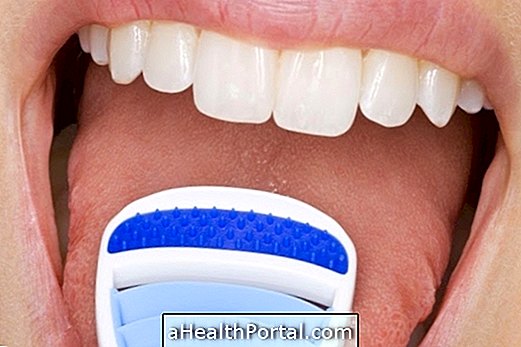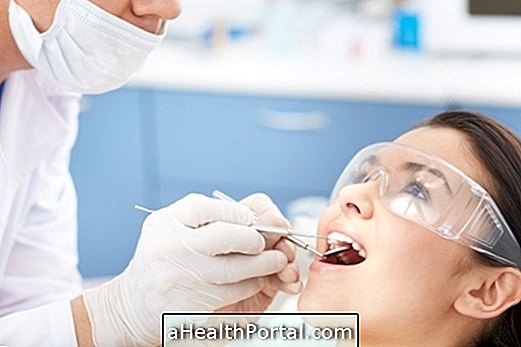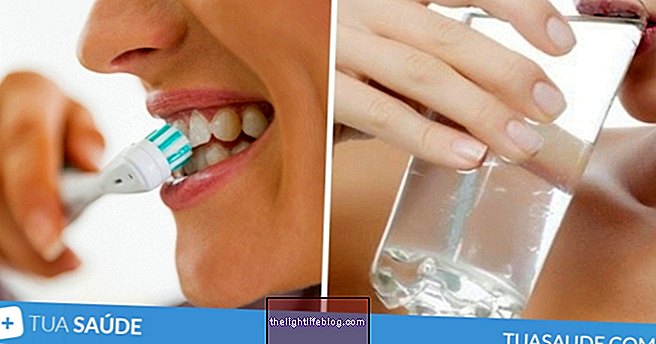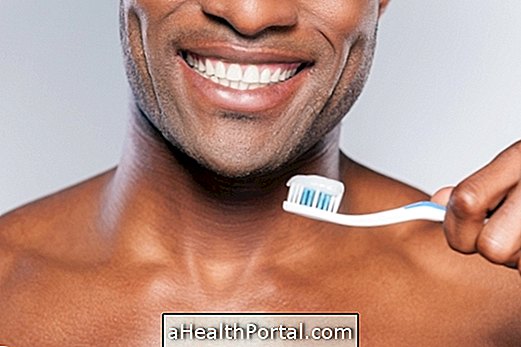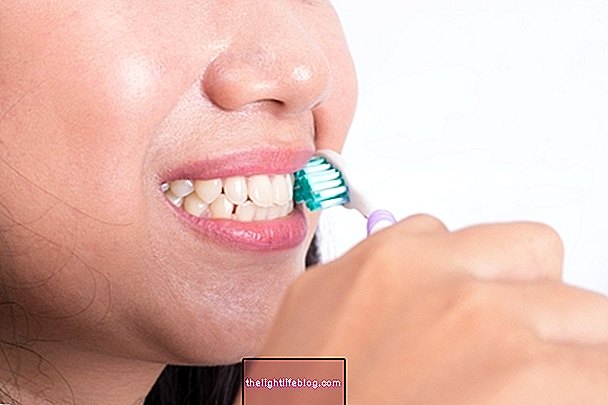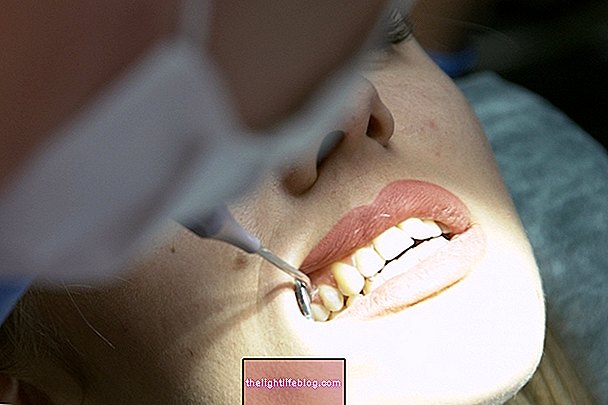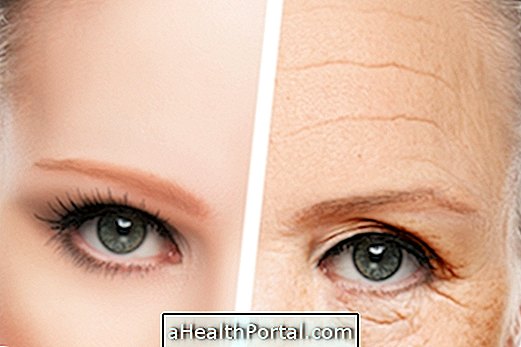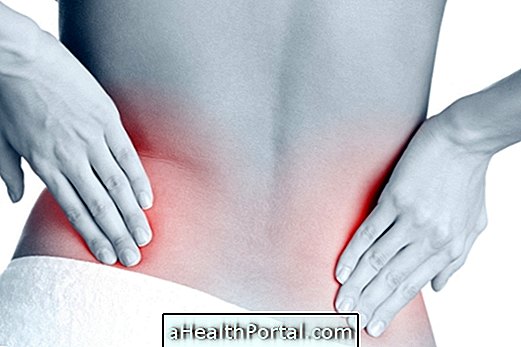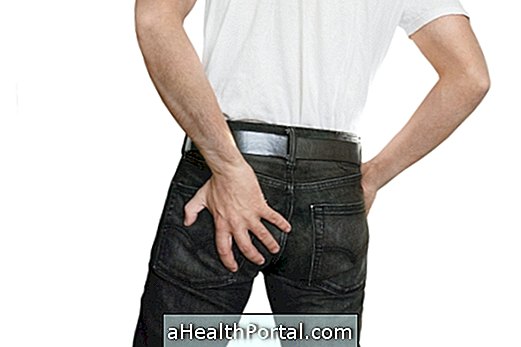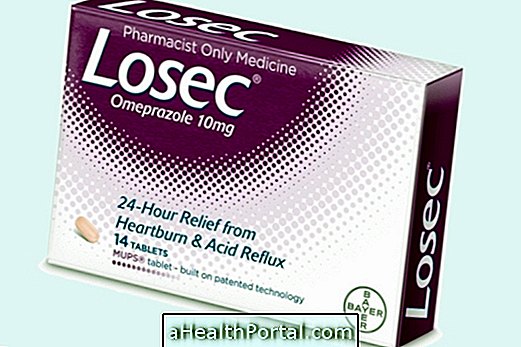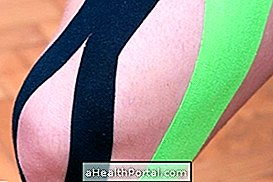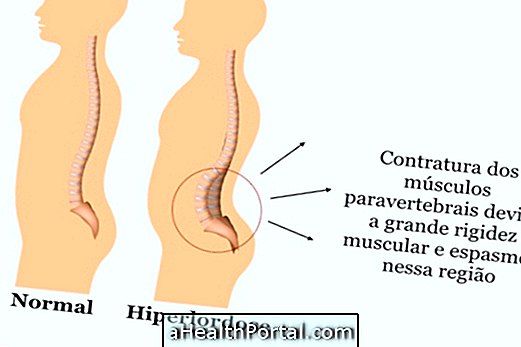Bacterial plaque is an invisible film filled with bacteria that forms on the teeth, especially in the connection between the teeth and the gum. When it is excessive the person can have the sensation of being with the dirty teeth, although it does not see any difference.
These bacteria located there ferment the sugar from the food, changing the pH of the teeth and this allows the entry of bacteria into the dentin, giving rise to cavities. When the person does not use floss or brush their teeth, this plaque may increase in size and affect the tongue and throat, and when they harden they give rise to tartar.
Tartar is actually the build up of bacterial plaque that stayed a long time in contact with saliva, and eventually hardened. When tartar is present it can be observed glued between the teeth, being a type of 'dirt' that does not leave when brushing the teeth, nor when flossing, and it is necessary to remove it at the dentist, through a cleaning with instruments such as curetra and other dental instruments.
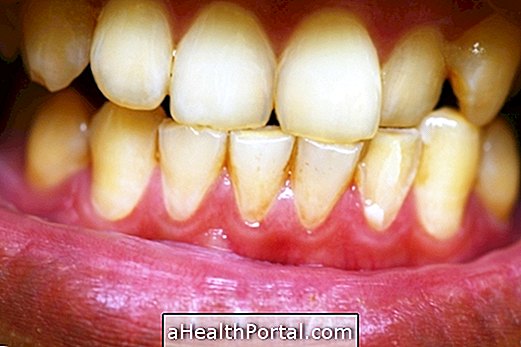
Consequences of bacterial plaque
The first consequence of plaque is to facilitate the entry of bacteria into the dentin of the tooth, which gives rise to:
- Cavities that cause the appearance of a small furinho or dark spot on the tooth, in addition to toothache, in the most advanced cases.
- Formation of tartar, which is a hardened substance, difficult to remove at home;
- Gingivitis, which causes redness and bleeding of the gums.
When the plaque stays in the throat gargling with mouthwashes or with warm water and salt may be helpful for its elimination. If there is a sore throat other gargling can be used, see some natural options for gargling and clearing the throat.
How to remove plaque
Every person has a thin layer of transparent bacterial plaque on the teeth. It is normal for every person to see it on the teeth, cheeks, tongue or throat when using a bacterial plaque product.
To remove this thin, invisible layer of bacteria from your teeth and from inside your mouth you should floss and brush your teeth every day. Finally it is also recommended to use a mouthwash, such as Listerine or Periogard, to thoroughly clean the mouth, removing as much bacteria as possible. With this care the excess bacteria are removed every day, and there is always a good balance inside the mouth.

When plaque forms tartar, you can use substances like sodium bicarbonate to better rub the teeth in order to make a homemade removal and better cleaning of the teeth. However, rubbing the teeth excessively with baking soda can eliminate the enamel that covers the teeth, giving opportunity for the cavities to manifest. Therefore, it is only advisable to brush your teeth with baking soda only once a week.
If this is not enough to eliminate tartar from the teeth, you should go to the dentist so he can do a professional cleaning with water jets or special instruments.
How to prevent plaque
It is impossible to completely remove all bacteria from the mouth, but to prevent bacterial plaque from overeating and causing dental problems, you need to:
- Brush your teeth at least 2 times a day, the last one always before bed;
- Floss your teeth before using the brush, at least before bedtime;
- Always use alcohol-free mouthwash to avoid burning the mouth;
- Avoid eating foods high in sugars and carbohydrates during the day when you can not brush your teeth soon after.
To complement these tips, individuals should go to the dentist at least once a year to remove the plaque from the more difficult places, such as the back of the mouth, for example. It is also important to keep your teeth clean, aligned and firm and therefore you may need to do some dental treatment such as using your teeth, for example, since well-aligned teeth are easier to keep clean and prevent bacterial plaque formation and Tartarus.
The toothbrush should be soft and completely cover the person's tooth, so adults should not use toothbrushes suitable for children, and vice versa. The hand brushes should be changed every 3 to 6 months, but when worn and with stiff bristles. In case you prefer the electric toothbrush, you should prefer one that has a rounded head and is soft, and these are most effective in eliminating food debris, bacterial plaque and even tartar.
